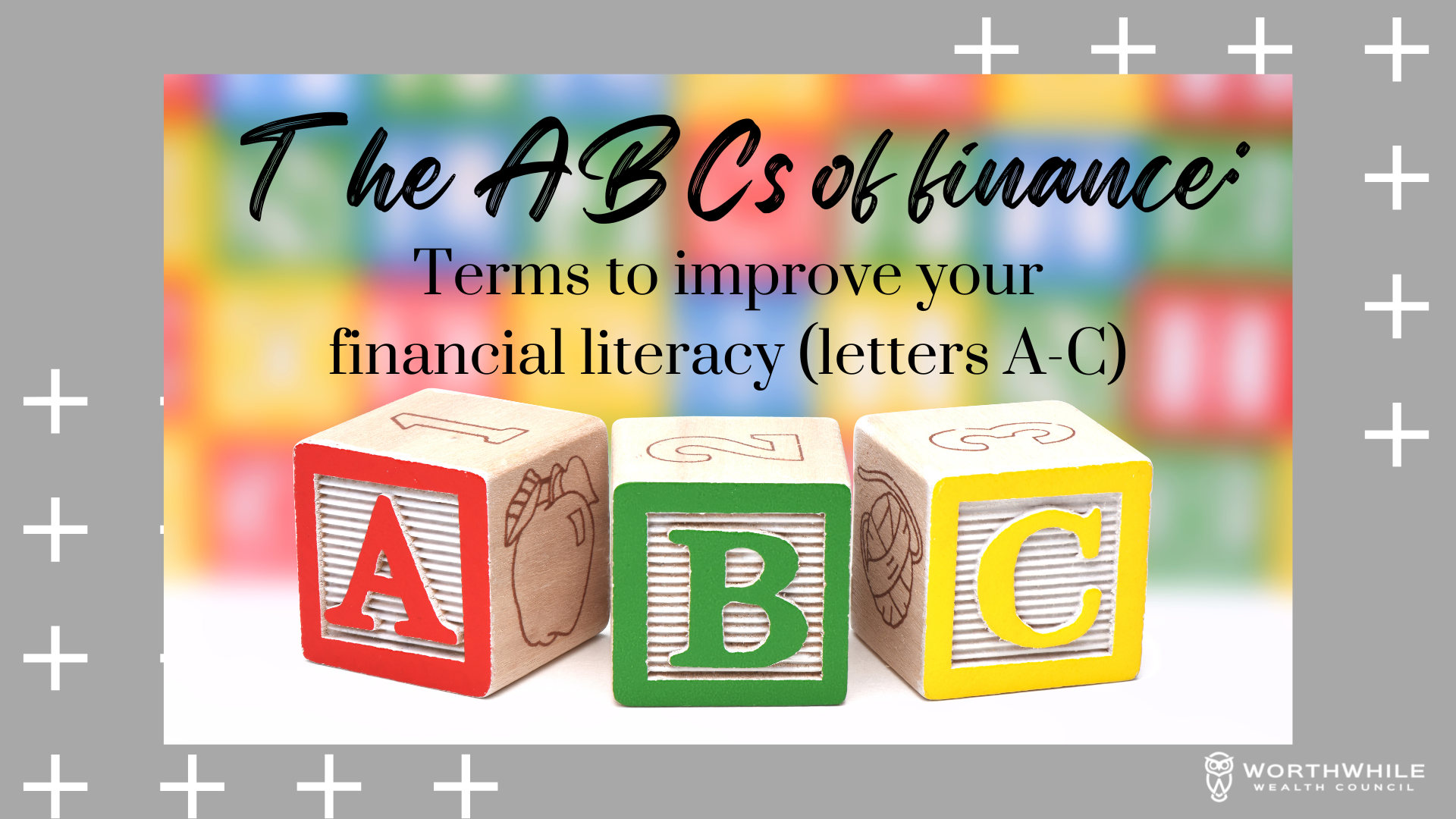It’s no secret that words have power, especially when it comes to explaining financial concepts. The more you know, the better you can understand your financial situation. Use this handy and accessible guide next time you need to show off some financial knowledge including numeric terms and the letters A through C, and find more in our additional blog posts at the bottom of this first list.
401(k): A retirement savings plan put in place by your employer into which you can make pre-tax contributions directly from your paycheck. Your employer may have a matching program and a profit-sharing feature.
Accrued Interest: The interest on a loan or bond that has accumulated over time since the principal investment. This occurs when there is a difference in the timing and measurement of cash flows. For example, if you receive a loan on August 1 and your lending company’s year ends on December 31, your loan will have four months of accrued interest.
ACH: The ACH, or Automated Clearing House, is a financial transaction network that processes large volumes of credit and debit transactions in batches. These include credit transfers, direct deposit and vendor payments.
APR: APR, or Annual Percentage Rate, is the annual rate charged on a loan or made through investing. It is a single percentage that represents the yearly cost of funds over the full term of a loan, including any additional fees or costs.
APY: Annual Percentage Yield, or APY, is a normalized interest rate, compounded during a period of one year. APY allows you to compare different deposit offerings of various compounding schedules to determine your best option.
Asset: An asset is something of economic value, owned by an individual or corporation, with the expectation that it will be beneficial in the future.
Balance Sheet: A balance sheet summarizes a company’s assets, liabilities, and shareholders’ equity at a given time. Segmented into these three sections, the balance sheet tells investors what a company owns, what it owes, and what is already invested by shareholders.
Balloon payment: Due at the end of an amortized mortgage or loan, a balloon payment covers the remaining balance. It’s typically a much larger payment made later in the loan period.
Basis Point (BSP): A common unit of measure used for calculating changes in interest rates. One basis point equals 1/100th of 1 percent or 0.01 percent, and a 1 percent change equals 100 basis points.
Bankruptcy: The process that occurs when a person or business becomes unable to pay outstanding debts. It begins with a filed petition and then all of a debtor’s assets are measured and used to repay a portion of their debt. After successfully declaring and completing the bankruptcy process, the debtor is relieved of previous debt, but may suffer long-term financial challenges in acquiring future credit.
Cash Flow: The net amount of money moving in and out of a business. A company with positive cash flow has increasing liquid assets, while negative cash flow means a company’s liquid assets are decreasing.
Closing Costs (ex: when buying a house): Closing costs are additional fees paid during the final transaction of a real estate sale when the title of the property is transferred to the buyer.
Co-Signer: A co-signer acts as a guarantor for a signed contract, such as a promissory note or loan document. This may result in financial risk for the co-signer.
Credit: When a borrower receives something of value and agrees to repay the lender in the future, often with interest, a lender will extend a fixed amount of credit to the borrower. When you use a credit card, for example, you receive your purchase items, your credit card company extends a loan to you up to a certain amount and you agree to pay for them via your monthly bill. Credit is also used to describe the proven history you have established through your repayment behavior.
This commentary was originally posted by Kasasa June 1, 2022
Source: https://www.kasasa.com/blog/personal-finance/personal-finance-glossary-a-c
**Disclaimer: This material has been prepared for informational purposes only, and is not intended to provide, and should not be relied on for, tax, legal or accounting advice. You should consult your own tax, legal and accounting advisors before engaging in any transaction.


